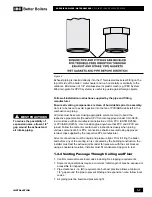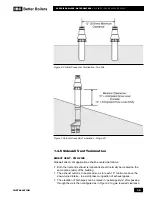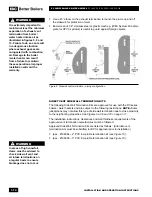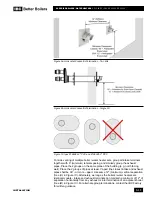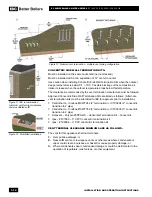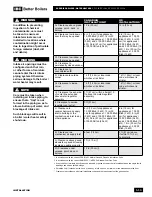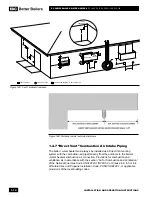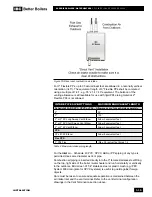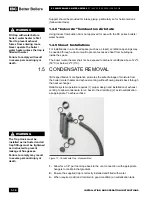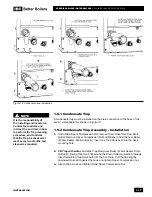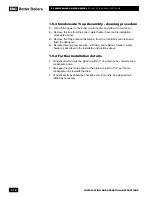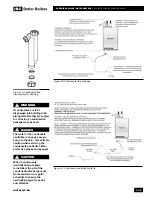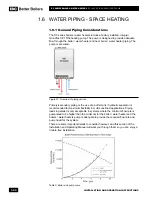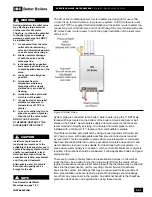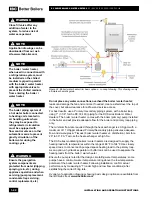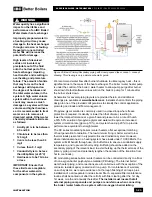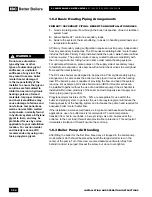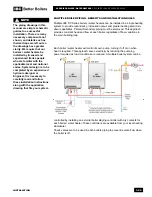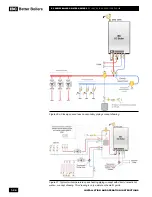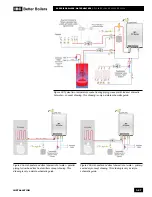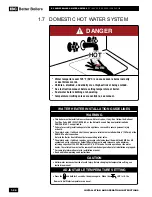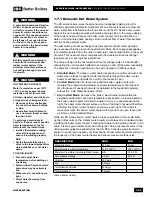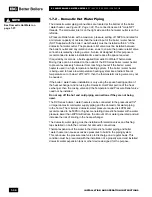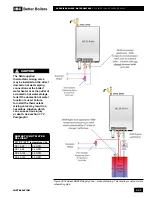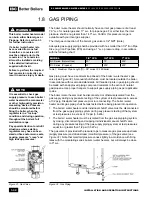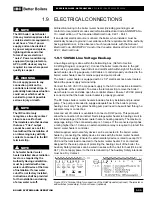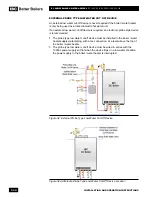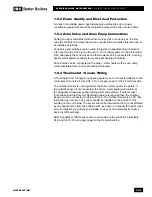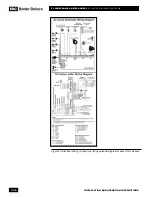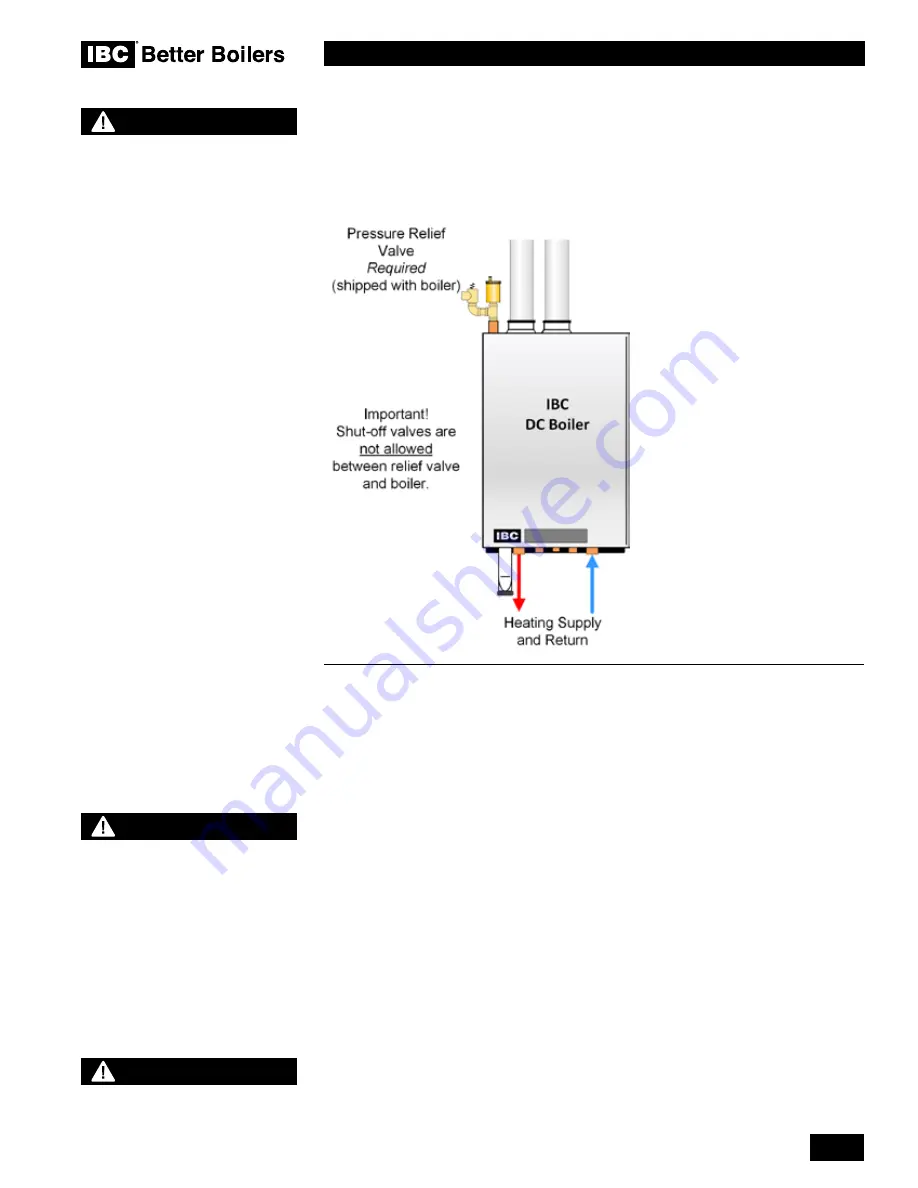
1-21
INSTALLATION
DC SERIES BOILERS / WATER HEATERS
DC 15-95, DC 15-96, DC 20-125, DC 33-160
The DC series modulating boilers / water heaters are designed for use within
a closed loop, forced circulation, low pressure system. A 30 PSI pressure relief
valve (3/4" NPT) is supplied for field installation at the boilers / water heaters top
connection point. A Relief Valve and Air Vent Piping Kit is also included with each
DC series boiler / water heater to aid in the proper installation of the relief valve
and air vent.
System piping is connected to the boiler / water heater using the 1" NPT Male
threaded fittings located on the bottom of the boilers. Unions and gate or ball
valves at the boilers / water heaters supply and return water connections are
recommended to simplify servicing. Un-insulated hot water pipes must be
installed with a minimum 1/4" clearance from combustible materials.
Fluid fill is most often accomplished by using a boiler regulator & fill valve set
at 12 psig or more, with appropriate backflow prevention device as required
by local code. This is acceptable in areas where municipal water or well water
has been treated and filtered to remove excessive minerals and sediment, and
water chemistry is known to be suitable for closed loop hydronic systems. In
areas where water quality is in question, or when chemical treatment or glycol is
required, other options should be considered. Follow applicable Codes and good
piping practice.
There are a number of boiler feed and pressurization devices on the market
today that may be a better choice than a raw water fill from the mains. When
regular maintenance requires relief valve blow-off, the discharge may be directed
back into the pressurization unit for recycling of boiler fluid and chemicals
back into the system. In buildings that may be unoccupied for long periods of
time, pressurization units are useful to prevent flood damage should leakage
occur from any component in the system. An additional benefit is that backflow
prevention devices are not required when using these devices.
CAUTION
Installers should inquire of
local water purveyors as to the
suitability of their supply for use in
hydronic heating systems. If water
quality is questionable, a local
water treatment expert must be
consulted for testing, assessment
and, if required, treatment.
Alternatively, water or hydronic
fluid of known quality can be
brought to the site.
WARNING
During operation, the relief valve
may discharge large amounts
of steam and/or hot water.
Therefore, to reduce the potential
for bodily injury and property
damage, a discharge line MUST
be installed that it:
1.
is connected from the valve
outlet with no intervening
valve and directed downward
to a safe point of discharge.
2.
allows complete drainage
of both the valve and the
discharge line.
3.
is independently supported
and securely anchored so as
to avoid applied stress on the
valve.
4.
is as short and straight as
possible
5.
terminates freely to
atmosphere where any
discharge will be clearly
visible and is at no risk of
freezing.
6.
terminates with a plain end
which is not threaded.
7.
is constructed of a material
suitable for exposure to
temperatures of 375°F or
greater.
8.
is, over its entire length, of a
pipe size equal to or greater
than that of the valve outlet.
DO NOT CAP, PLUG OR
OTHERWISE OBSTRUCT THE
DISCHARGE PIPE OUTLET!
Figure 23: Relief Piping
NOTE
See Domestic Hot Water
Warnings on page 1-27.

